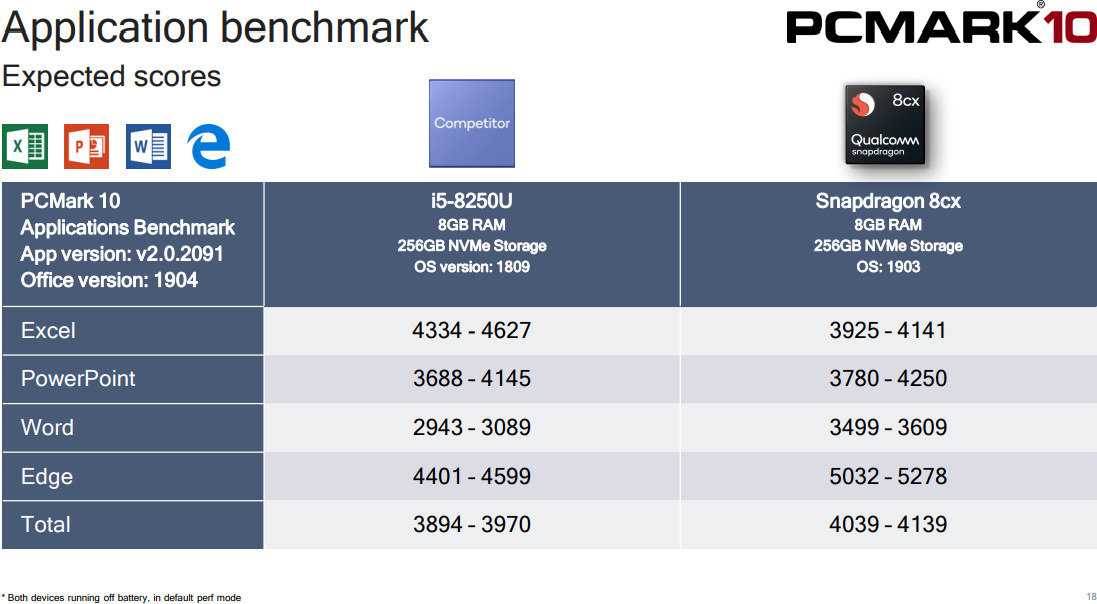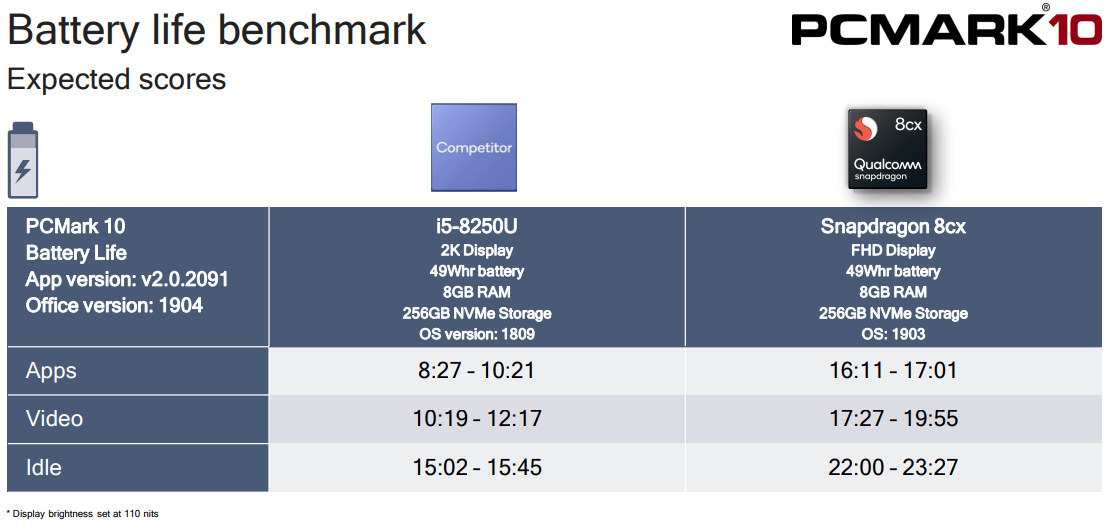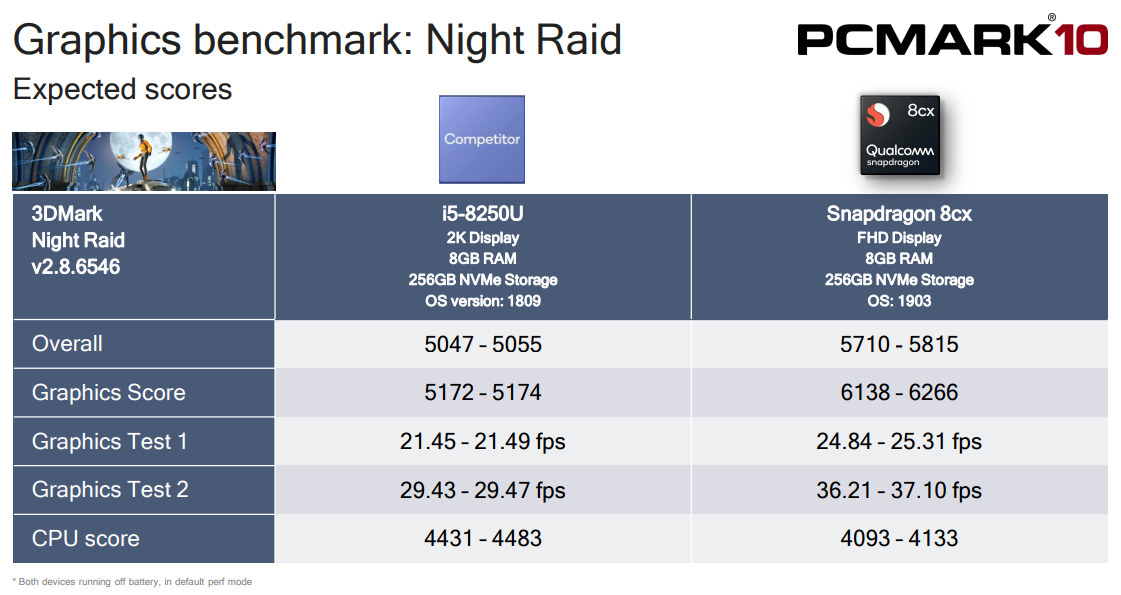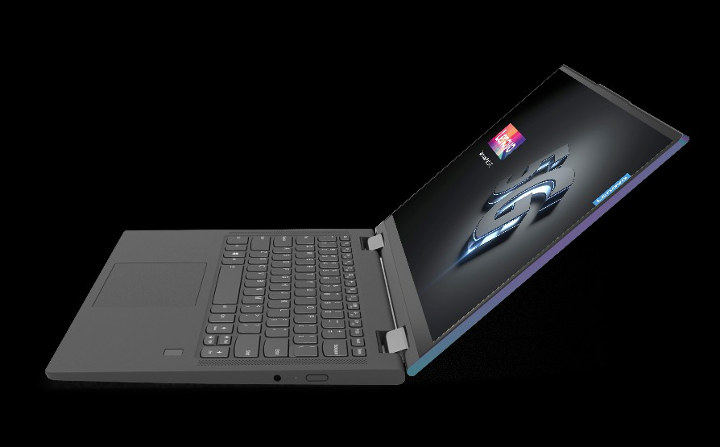Last December, Qualcomm unveiled Snapdragon 8cx processor for laptops, or as the company calls them “always-on always connected mobile PCs”. Only 4G LTE was mentioned at the time, but a few months later it was confirmed that the processor would find its way into 5G always-connected mobile PCs.
Qualcomm made two main announcements at Computex 2019 about their new Arm processor for laptops. First, they announced a partnership with Lenovo for Project Limitless, the first 5G PC powered by the Qualcomm Snapdragon 8cx 5G compute platform, and the company released some benchmarks to demonstrate the high performance and long battery life of their solution.
Lenovo Project Limitless 5G Laptop
The press release did not reveal that much information, but we do know Project Limitless features Qualcomm Snapdragon 8C 5G compute platform with Snapdragon X55 5G modem enabling download speed of up to 2.5 Gbps, and it will be the first 5G laptop available once it becomes available in early 2020. One of the benefits of 5G is supposed to be remote storage since network connectivity may be even faster than local storage, and 4K and 8K video streaming will benefit from the high-speed data transfer rates, as well as AR and VR applications, and gaming thanks to lower latency.
Qualcomm Snapdragon 8cx Benchmarks
Qualcomm also has worked with UL (previously Futuremark) to create new PCMARK 10 benchmarks, which they ran on Snapdragon 8cx reference laptop, and an Intel Core i5-8250U laptop.
Specifications of the two systems:
| DUT | Unnamed competitor laptop | Qualcomm Snapdragon 8cx reference laptop |
| Processor | Intel Core i5-8250U Kaby Lake-R (15 Watts TDP) | Qualcomm Snapdragon 8cx |
| RAM | 8GB RAM | |
| Storage | 256GB NVMe Storage | |
| Display | 2K resolution display (2048×1080) | FHD resolution display (1920×1080) |
| Battery | 49Whr battery | |
| OS | Windows 10 OS version: 1809 | Windows 10 OS version: 1903 |
The two systems are pretty similar, but the Intel laptop may be slightly hurt in benchmarks involving graphics due to its larger display. However, it’s just a few more pixels, so the hit should be minimal.
The two new benchmarks are PCMark10 Application test for real-life application performance (Excel, PowerPoint, Word, Microsoft Edge) and PCMark10 Battery Life Profile test which estimates battery life.

According to PCMark 10 Application benchmark results, both systems have pretty much equivalent real-life performance with a small advantage for the Snapdragon 8cx processor, which appears to work quite fast in Word and Edge web browser.

However, the Snapdragon 8cx reference laptop achieves this level of performance with much higher efficiency, since the laptop can last many more hours on a single charge compared to the Intel laptop both of which have the same battery capacity.

They also ran Night Raid graphics benchmarks on both systems, and the Adreno 680 GPU found in the Snapdragon processor performs well against the Intel UHD Graphics 620 delivering higher scores and frames per second.
Qualcomm also released a few video comparing Snapdragon 8cx laptop performance to an “unnamed competitor” which may be the same Core i5-8250U laptop listed above.
Via XDA Developers

Jean-Luc started CNX Software in 2010 as a part-time endeavor, before quitting his job as a software engineering manager, and starting to write daily news, and reviews full time later in 2011.
Support CNX Software! Donate via cryptocurrencies, become a Patron on Patreon, or purchase goods on Amazon or Aliexpress





